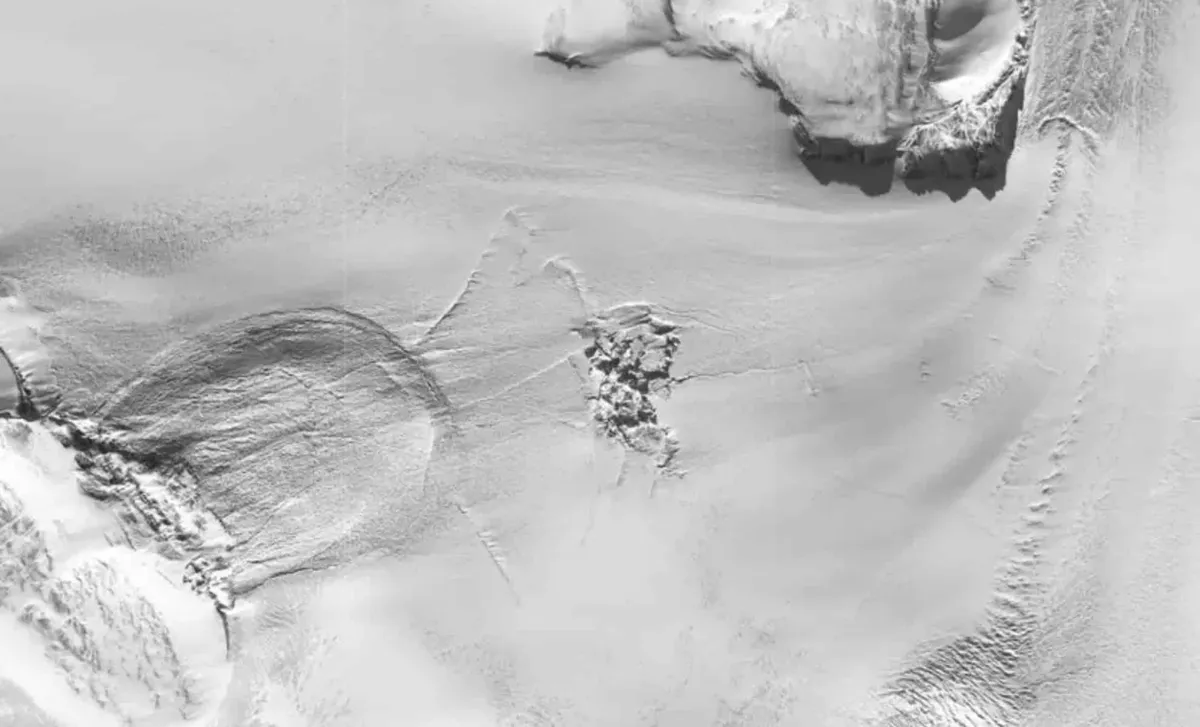
In a groundbreaking discovery, scientists were astonished by a peculiar event that occurred on Greenland’s ice sheet in 2014, now elucidated by recent research. A study published in Nature Geoscience details the unexpected eruption of meltwater from a subglacial lake, which dramatically pierced through the ice sheet. These findings have left researchers perplexed, as this event defies previous understanding of how water typically drains from beneath Greenland’s ice.
Malcolm McMillan from Lancaster University, a key researcher involved in the study, remarked, “We haven’t observed anything like this before.” This statement underscores the unprecedented nature of the event. Subglacial lakes beneath Greenland’s massive ice sheet have long intrigued scientists. Typically, these lakes drain gradually, releasing meltwater slowly beneath the ice. However, the 2014 incident was a significant deviation from this norm. Instead of the usual gradual release, a sudden and substantial rupture occurred, leading to a dramatic eruption of water through the ice sheet.
Researchers believe that over a span of ten days during the summer of 2014, water pressure built up gradually, eventually forcing its way through the ice with explosive force. The result was a massive crater in the ice sheet, captured through satellite imagery—an event unlike anything scientists had previously encountered. This eruption has raised numerous questions regarding the behavior of subglacial lakes and its potential consequences for the ice sheet as a whole, suggesting that the dynamics of Greenland’s ice are more complex and unpredictable than earlier thought.
The implications of this eruption are far-reaching, intensifying concerns about the melting of the Greenland ice sheet. Greenland boasts the second-largest ice sheet in the world, following Antarctica, and its gradual melting significantly contributes to global sea level rise. Rising global temperatures—largely driven by human-caused pollution from fossil fuel consumption—have led to unsustainable ice loss in both the Arctic and Antarctic regions. NASA’s studies reveal a troubling trend: Greenland’s ice sheet is losing mass at an accelerating rate, with a striking 12.2% decrease per decade.
This ice loss directly contributes to rising sea levels, exacerbating extreme weather events and threatening coastal habitats worldwide. The newly discovered phenomenon of the subglacial lake eruption highlights the vulnerability of Greenland’s ice sheet and underscores the unpredictable nature of climate change. McMillan noted, “We know that lakes beneath Greenland drain,” further emphasizing that while researchers understand basic drainage mechanisms, this eruption offers an entirely new perspective on ice dynamics.
The physical act of water bursting through the ice could result in various implications for future ice behavior, potentially accelerating the melting process even further. As the stability of the ice sheet continues to decline, scientists face the challenge of predicting and responding to these emerging changes.
The situation necessitates urgent action and further investigation into the complexities of Greenland’s ice dynamics. While research into radical geoengineering solutions is underway, such strategies remain years away from potential application. These innovative approaches, which could include efforts to artificially slow the melting of polar ice, require careful consideration and extensive testing to assess their long-term viability and environmental impact.
Meanwhile, the international scientific community advocates for comprehensive climate action to tackle the root causes of melting ice sheets. Insights gained from this eruption provide crucial data for shaping future climate policy. Understanding the behavior of subglacial lakes and their potential for rapid, unexpected changes is vital in predicting future ice loss and mitigating associated risks. As global temperatures continue to rise, scientists are tasked with deciphering the rapidly evolving ice dynamics to inform strategies aimed at preserving the planet’s ice sheets and protecting coastal communities.